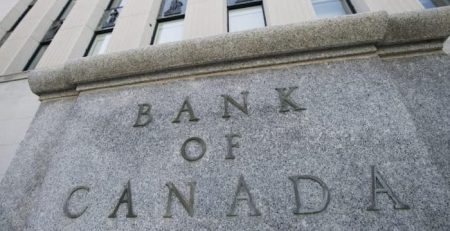Major lenders begin to cut fixed mortgage rates
[Globe and Mail – April 16, 2020]
Fixed mortgage rates are creeping lower this week, as the funding markets that banks and other mortgage lenders use to raise money for loans have begun to normalize after weeks of outsized volatility.
Toronto-Dominion Bank brought its five-year fixed rate down to 3.09 per cent from 3.24 per cent this week, and several other major lenders including Royal Bank of Canada and MCAP have also reduced their rates. Five-year fixed-rate mortgages ranged between 2.39 per cent and 3.19 per cent this week, according to mortgage brokers, which is lower than the beginning of April, although still up compared with early March.
Fixed rates are finally coming down in line with a decline in government bond yields, as the cost of raising money by mortgage lenders has begun to return to normal after significant interventions in credit markets by the Bank of Canada and an improvement in investor sentiment.
Over the past six weeks, fixed mortgage rates have moved in puzzling ways.
After the first Bank of Canada interest-rate cut on March 4, mortgage lenders reduced their rates on fixed-term loans. Mortgage lenders, however, raised their fixed-term rates after the Bank of Canada’s two subsequent rate cuts in March, despite a steep drop in government treasury yields that month.
The reason for the unusual divergence between the movement of government bond yields and fixed mortgage rates is that lenders price mortgages based on their own funding costs, which are driven by market forces. As COVID-19 crashed into the financial system in late February, their cost of borrowing money, in both short-term and long-term markets, went through the roof.
Institutional investors who typically buy bank debt flocked to more liquid instruments, such as government bonds. In turn, corporate issuers saw their cost of issuing debt balloon as investors demanded larger liquidity and risk premiums to invest in anything but the safest assets.
“Investors became so defensive in their portfolios that even though the Bank of Canada interest rates were going lower, and the Government of Canada interest rates were going sharply lower, people are actually demanding higher yields to hold investment-grade credit,” said Andrew Kelvin, chief Canada strategist with TD Securities.
In late February, Canada’s largest banks could sell five-year bonds – the bedrock of five-year fixed-rate mortgages – for around 75 basis points above Government of Canada five-year bonds. That spread widened to almost 300 basis points in mid-March, although it has since come down considerably. (A basis point is a hundredth of a percentage point.)
The spreads on mortgage-backed securities and Canada Mortgage Bonds, which lenders, especially non-bank lenders, use to raise money for new mortgage loans, also shot up, even though most mortgage-backed securities are guaranteed by the federal government.
Mortgage-backed securities compete for investor attention with investment-grade bonds, said Mark Chandler, head of Canadian rate strategy at RBC Dominion Securities. “So as corporate bond spreads widened out, spreads for those got pulled wider as well,” he said.
Short-term funding markets experienced a similar shock, which had an impact on the discounts being offered on variable-rate mortgages. Although variable-rate mortgages are typically offered close to a lender’s prime rate, the discounts to prime are based on prices in the short-term credit market.
The key gauge of liquidity in short-term credit markets – the spread between the rate at which banks lend to corporations on a short-term basis and their own overnight borrowing costs – shot up from around 30 basis points in February to more than 130 basis points in March.
This was driven by the fact that demand for short-term credit outstripped supply, said Charles St-Arnaud, chief economist with Alberta Central, which provides banking services to 16 credit unions in the province. “The problem we have had is that everyone has been on the same side of the trade,” he said.
Credit markets have improved in recent weeks, with spreads coming down on a range of fixed-income products, Mr. St-Arnaud said. “That has allowed banks to see their own cost of funding being lowered,” he said.
This has been driven in part by improving investor sentiment, but also by direct central-bank interventions in the market.
In mid-March, the Bank of Canada began buying a number of fixed-income instruments on the open market, including banker’s acceptances, which are used for short-term corporate borrowing, and Canada Mortgage Bonds. At the same time, Canada Mortgage and Housing Corp. began buying mortgage-backed securities directly from mortgage lenders.
These actions appear to be improving liquidity in several systemically important credit markets, which means the cost of issuing into these markets is coming down, Mr. Kelvin of TD said.
“By lowering the cost of raising funds … that ultimately makes it easier for them to offer mortgages at somewhat lower rates, which helps the Bank of Canada’s rate cut pass through to households,” he said.











